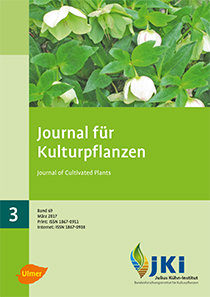Alternative flowering crops as potential food sources for beneficial arthropods
DOI:
https://doi.org/10.5073/JfK.2017.03.01Keywords:
Functional biodiversity, pollinators, conservation biological control, agricultural landscape, crop diversificationAbstract
Various flowering crops (buckwheat, caraway, carrot, faba bean, flax, lupine, milk thistle, mustard, parsnip, phacelia) were evaluated for their suitability in providing nutritional resources for natural enemies and pollinators in small scale field trials. Flower visitors were documented by visual observation during the full blossom period of these plants. In addition, transparent water traps were installed to record the activity of arthropod groups in the flowering plots. Honey bees and bumble bees were the most frequent flower visitors of crop plants with more or less concealed nectaries and specialized flower structure (mustard, phacelia, lupine and milk thistle). Other wild bees could be observed frequently in flax. Ants and parasitic wasps were mainly active in plants with open flower type and exposed nectaries and stamina (parsnip, buckwheat). Also the extrafloral nectaries of faba bean were frequently visited by ants. Syrphids, but also various bee species (e.g. Apis, Bombus, Halictus) were better documented by direct visual observation than by captures in transparent water traps.
Published
Issue
Section
License
The content of the journal is licensed under the Creative Commons Attribution 4.0 License. Any user is free to share and adapt (remix, transform, build upon) the content as long as the original publication is attributed (authors, title, year, journal, issue, pages).
The copyright of the published work remains with the authors. The authors grant the Journal of Cultivated Plants, the Julius Kühn-Institut and the OpenAgrar repository the non-exclusive right to distribute and exploit the work.







